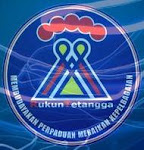
—A skeleton emerges from the floor of an ancient grave in a photo taken in April 2008, one of nearly a thousand tombs recently discovered in Bogotá, Colombia.
Builders clearing land for a housing project in the city's Usme district uncovered the burial site last year. (Read the full story.)
The tombs range in date from the first century to the 16th century A.D., based on analysis of pottery found with the remains.
One skeleton is of a young woman who seems to have been buried alive, possibly in a ritual of human sacrifice, said Ana Maria Groot, one of the lead anthropologists from the National University of Colombia working at the site.
"Her mouth is open as if in terror, and her hands seem contracted as if she had tried grabbing hold of something," Groot said.

An anthropologist from the National University of Colombia examines human remains recently found at a massive tomb complex in Bogotá in a photo taken April 22, 2008.
Archaeologists also discovered the ruins of a nearby settlement next to the burial site, including what may be evidence of a temple.
The site covers some 12 acres (5 hectares) and contains crucial clues about the two little-known civilizations that occupied the area for about 1,500 years, experts say.
Rife with artifacts from both periods, the newfound complex is a potential treasure trove of information, anthropologist Ana Maria Groot said.
"A settlement like Usme offers the chance to research the settlement's development through different moments in a prolonged occupation," she said.

An anthropologist excavates one of about a thousand ancient tombs recently discovered in Bogotá, Colombia, in a photo taken April 22, 2008.
Pottery found with the remains—which date from the first to the 16th century A.D.—mostly includes fragments of decorative and simple pitchers, cooking pots, and cups.
Researchers also found stones for grating or cutting vegetables and for grinding grain.
Archaeologist and former National Geographic grantee Guillermo Cock, who is not involved in the current excavation, said the site will prove "invaluable" to understanding a poorly studied period in South American history
kompilasi,
khairulnazri.blogspot.com
khairulnazri.blogspot.com

















.jpeg)


















































No comments:
Post a Comment